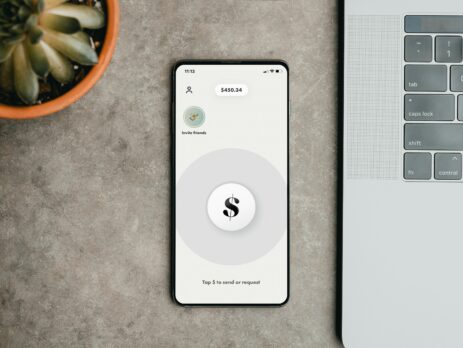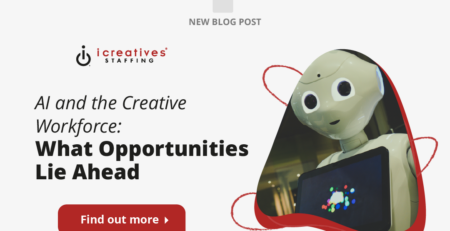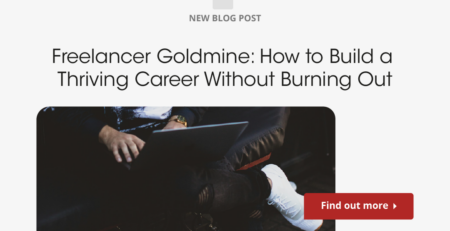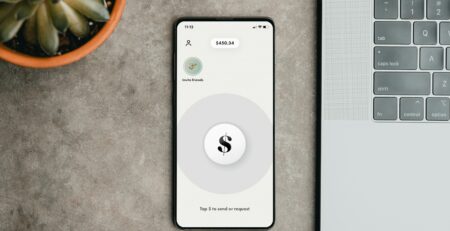Perks and Benefits in the World of Graphic Design Salaries
In the competitive field of graphic design, understanding the full scope of compensation beyond just the salary is crucial for both employers and employees. As the industry evolves, so do the ways in which designers are compensated for their creativity and hard work. This comprehensive exploration delves into the various perks and benefits that can accompany a graphic designer’s salary, offering a deeper understanding of what truly constitutes a rewarding compensation package in this creative sector.
Graphic design, a profession known for its creativity and impact in the visual communication of ideas, often sees variability in how professionals are remunerated. Salaries can vary widely, but they tell only part of the story. The total compensation package, including various benefits and perks, plays a pivotal role in attracting and retaining top talent in the field.
Benefits such as health insurance, retirement plans, and paid leave are fairly standard across many industries, but the graphic design sector often extends beyond these basics. Unique perks tailored to foster creativity and job satisfaction are increasingly becoming a focal point. These can include flexible working hours, remote work options, professional development opportunities, and more.
Moreover, many design firms and agencies are now offering benefits that cater to the well-being of their employees. These include wellness programs, mental health support, and access to creative resources. Such benefits not only enhance job satisfaction but also boost productivity and creativity, essential traits for success in this field.
The importance of these additional benefits cannot be understated, especially in a creative profession like graphic design. They often contribute to a designer’s decision to accept a job offer or stay with a company long-term. Creative staffing agencies, including firms like icreatives staffing, understand the significance of these benefits in attracting and retaining top talent. By leveraging their expertise, these agencies can help employers craft attractive job offers while assisting employees in making informed career choices. This strategic approach not only benefits the workforce but also enhances the competitive edge of businesses in the creative industry.
Another aspect to consider is the role of freelance and contract work, which is prevalent in the graphic design industry. Freelancers may not have access to the same level of benefits as full-time employees, but they often negotiate payment terms, project fees, and other compensations that can equate to or surpass those of traditional employment.
For employers, understanding the expectations and desires of graphic designers regarding compensation packages is vital. It’s not just about competitive salaries but also about creating an environment where designers feel valued and supported. This approach can lead to higher retention rates and attract more skilled professionals to their teams.
Employees and job seekers in the graphic design industry, on the other hand, should consider the full range of benefits and perks when evaluating job offers. Looking beyond the payslip to consider factors like work-life balance, professional growth opportunities, and the work environment can lead to more satisfying and sustainable career choices.
This exploration will also touch on how these benefits can vary globally, as cultural and economic factors influence the structuring of compensation packages in different regions. Such insights are crucial for both multinational companies and designers who work in or are considering opportunities in international contexts.
Finally, the discussion will provide actionable advice for both employers and designers on how to negotiate and structure compensation packages that align with industry standards and personal or organizational goals. With the graphic design industry becoming more dynamic, understanding these elements of compensation is more important than ever.

Standard Benefits for Graphic Designers
Graphic designers, like many professionals, typically look for a solid benefits package that includes health insurance, dental and vision coverage, and a retirement savings plan. These foundational benefits are crucial for providing security and peace of mind, allowing designers to focus more on their creative tasks. Companies might also offer life insurance and disability insurance, further enhancing the attractiveness of their compensation packages.
Many organizations recognize the need for mental health support, especially in creative fields that can be both rewarding and stressful. Access to mental health resources, counseling, and wellness programs are becoming more common. These benefits not only support the designer’s health but also contribute to a more productive work environment. For more on supporting mental health in the workplace, visit Psychological Safety in the Workplace.
Paid time off is another critical component. This not only includes vacation days but also sick leave and personal days. Some companies are distinguishing themselves by offering unlimited PTO, which can be particularly appealing to employees seeking a better work-life balance.
Professional development is highly valued in the graphic design industry. Employers may offer benefits such as tuition reimbursement, paid attendance at industry conferences, or in-house training. These opportunities are essential for keeping skills up-to-date and fostering continuous learning and innovation within the team.
Remote work options have become a significant part of the conversation, especially following the global shift in work dynamics due to the pandemic. Offering the flexibility to work from home or from different locations can be a huge benefit for graphic designers, who often value creative and comfortable work environments.
Some companies go beyond these standard offerings to include unique perks such as stipends for home office setups, subscriptions to design software or magazines, and even memberships to coworking spaces. These benefits are tailored specifically to the needs and preferences of creative professionals, making them more effective in attracting skilled designers. Learn more about setting up an effective remote workspace at Tips for Managing a Remote Work Force.
Equity and stock options are sometimes part of the compensation package, particularly in startups or tech companies. While this can be more variable and risk-associated, it offers the potential for significant financial reward and investment in the company’s success.
For those with families, additional benefits such as parental leave, childcare assistance, or even pet insurance can be part of the package. Recognizing the diverse needs of their workforce, companies that offer these more inclusive benefits can stand out as particularly attractive employers.
It’s also worth noting that some firms provide bonuses or profit-sharing plans, which can significantly enhance a graphic designer’s earnings based on company performance. These financial incentives can motivate employees to contribute to the company’s success actively.
In conclusion, while the base salary is often the focus during job negotiations, the benefits and perks associated with a position can substantially impact a graphic designer’s decision to accept a job offer. Employers looking to attract top talent should consider how their benefits package can be tailored to meet the needs and desires of creative professionals.
Comparing Graphic Design Industry Perks to Other Creative Fields
The graphic design industry often offers a unique set of perks compared to other creative fields such as advertising, digital marketing, and media production. Understanding these differences can help professionals make more informed career choices and guide companies in crafting competitive compensation packages.
In advertising and marketing, for example, perks might include bonuses tied to campaign performance or client acquisition, reflecting the direct impact of these professionals’ work on company revenue. In contrast, graphic design perks are often more focused on fostering creativity and innovation, such as access to cutting-edge design tools and paid time for personal creative projects.
Media production might offer perks like behind-the-scenes access to events or projects, which are specific to the entertainment and media industry. Graphic designers, while sometimes overlapping with media production, typically enjoy perks that enhance their design skills and portfolios, such as sponsored participation in design contests or showcases.
Another difference is seen in work environment flexibility. While many creative fields have embraced remote work, graphic design has been particularly forward-thinking in this area, often offering more extensive remote work options and flexible schedules. This flexibility is highly valued among graphic designers, who may require inspiration from various environments for their creative outputs.
Professional development opportunities also vary across fields. In graphic design, there is a significant emphasis on continuous learning of new design software and techniques, often supported by employer-sponsored training and subscriptions to online courses. In fields like digital marketing, the focus might be more on data analytics and marketing strategy enhancements.
Job stability and project variety can also differ. For instance, careers in advertising might involve working on multiple short-term campaigns, whereas graphic designers might work on long-term projects like corporate branding, which provides a different type of job security and creative satisfaction.
Collaboration opportunities are another aspect where differences can be noted. Graphic designers often collaborate with other designers and creative professionals, which can be a perk for those who thrive in collaborative environments. In contrast, professionals in other fields might have more solitary roles or competitive environments.
Finally, the impact of technological advancements on the type of perks offered can vary. In graphic design, the rapid development of design technologies means that access to the latest software and tools is a crucial perk. In other fields, such as digital marketing, the focus might be more on analytics tools and CRM systems.
Understanding these nuances can help graphic designers and employers alike to appreciate the specific perks and benefits that make each creative field unique. For designers, this knowledge is crucial for choosing a career path that aligns with their values and lifestyle preferences. For employers, it provides insight into how to structure benefits packages that effectively attract and retain creative talent.
Overall, while there are commonalities in the types of perks offered across creative professions, the specific nature and impact of these perks can vary significantly. Companies that recognize and address these differences in their compensation packages are more likely to succeed in hiring and retaining the best talent in each field.
Unique Benefits to Attract Top Graphic Design Talent
In the competitive field of graphic design, companies are increasingly looking for ways to stand out and attract the best talent. Beyond the standard benefits package, some unique perks are specifically tailored to meet the needs and desires of creative professionals. These benefits not only make a company more attractive to potential hires but also contribute to higher job satisfaction and retention rates.
One such benefit is the provision of a creative allowance. This can be used for purchasing books, software, or even attending workshops and courses that are not directly covered by the company’s standard professional development policies. It empowers designers to take charge of their own growth and development in ways that best suit their personal and professional goals.
Another innovative perk is offering sabbaticals for long-term employees. Unlike standard vacation time, a sabbatical provides an extended period away from work, allowing designers to explore other creative pursuits or personal development opportunities that can rejuvenate their passion and inspiration for their work.
Some companies also offer a ‘technology stipend’ to help cover the cost of up-to-date hardware and software. This is particularly appealing in a field that constantly evolves with new tools and technologies, ensuring that designers have access to the best resources to do their work effectively.
Flexible work locations are also a significant perk. While remote work has become more common, some companies take this a step further by offering opportunities to work from different company locations globally. This can be particularly appealing to designers who draw inspiration from various cultures and environments.
Health and wellness benefits tailored to the needs of creative professionals can also be a significant draw. This might include subscriptions to mental health apps, memberships to gyms or yoga studios, or even in-office amenities like massage chairs or relaxation areas.
For those interested in environmental sustainability, some companies offer perks like company-sponsored volunteer days or donations to charity in the employee’s name. This can appeal to designers who value corporate responsibility and wish to work for companies that contribute positively to the community and environment.
Another unique benefit is the provision of legal and financial counseling services. This can be particularly beneficial for designers who freelance or run their own businesses on the side, helping them manage their finances better and understand their legal rights and responsibilities.
Companies might also offer unique team-building experiences, such as retreats or workshops that focus on creativity and innovation. These experiences can help build a stronger team dynamic and foster a sense of community and shared purpose among employees.
Lastly, some firms provide visibility and recognition opportunities, such as featuring employees’ work on the company website or in industry publications. This not only boosts the designer’s portfolio but also helps them build their reputation in the industry.
By offering these unique perks, companies can create a more attractive and fulfilling work environment for graphic designers. Such benefits go beyond the basics of health insurance and retirement plans to address the specific lifestyle and professional needs of creative professionals, making these companies preferred employers within the competitive graphic design industry.
Negotiating Better Benefits for Freelance Graphic Designers
Freelance graphic designers face unique challenges when it comes to benefits, as they are not typically provided by an employer. However, there are strategies that freelancers can employ to negotiate better terms and ensure they receive a compensation package that reflects their value and meets their needs.
One key strategy is to build a strong portfolio that demonstrates the quality and range of their work. This not only helps in attracting clients but also positions the freelancer as a professional who deserves not just fair compensation but also beneficial terms.
Freelancers should also consider joining professional associations or networks. These organizations often offer resources such as health insurance plans, retirement savings plans, and even discounts on software and business services that are tailored to the needs of freelancers.
Negotiating upfront about project terms and expectations is crucial. This includes clear discussions about payment schedules, project scope, and deadlines. Freelancers should not shy away from negotiating payment terms that could include a higher upfront payment, which can help manage financial flow more effectively.
Another effective negotiation tactic is to offer package deals or retainers to clients. This can ensure a steady workload and income, and often allows for better overall terms, including benefits like paid time off or bonuses based on project success.
Freelancers should also educate themselves on tax benefits and deductions available to them, such as home office deductions or expenses related to their work. This can significantly impact their net income and financial health.
It’s also beneficial for freelancers to invest in their own professional development and use this as a selling point in negotiations. Clients may be more willing to agree to better terms if they see that the freelancer is committed to staying relevant and innovative in their field.
Using contracts that clearly outline the terms of engagement can protect freelancers from scope creep and ensure they are compensated for any additional work requested. This helps in maintaining a professional relationship and clear communication with clients.
Freelancers might also consider bartering services with other professionals, such as legal or accounting services, which can provide them with necessary support without the upfront costs. This can be particularly useful for freelancers just starting out or looking to minimize expenses.
Finally, maintaining a professional demeanor and clear, consistent communication can help freelancers build long-term relationships with clients, which can lead to better terms and benefits as their reputation grows.
By employing these strategies, freelance graphic designers can negotiate terms that not only provide fair compensation but also support their professional and personal growth. While freelancing does come with its set of challenges, effectively managing negotiations can lead to a more stable and rewarding career.
The Impact of Benefits on Job Satisfaction and Retention in Graphic Design
The benefits and perks offered by employers can have a significant impact on job satisfaction and retention rates among graphic designers. A well-thought-out benefits package can make the difference between a designer feeling valued and supported or looking for opportunities elsewhere.
Health benefits, including medical, dental, and vision insurance, are fundamental to employee satisfaction. These benefits are often expected, but the quality and extent of coverage can significantly impact how employees perceive their overall compensation and care from the company.
Mental health support and wellness programs are increasingly important, especially in creative fields that can be highly stressful. Companies that offer comprehensive mental health resources, including counseling services and stress management programs, are likely to see higher levels of employee satisfaction and lower turnover rates.
Retirement savings plans are another critical factor in job satisfaction, particularly for long-term financial security. Employers that match contributions or offer better-than-average retirement plans can attract and retain top talent more effectively.
Professional development opportunities are particularly valued in the graphic design industry, where keeping up with new technologies and trends is essential. Employers that invest in their employees’ growth by funding training, conferences, and certifications are seen as more supportive and committed to their teams’ success.
Work-life balance is a significant factor in job satisfaction. Benefits such as flexible working hours, remote work options, and generous PTO policies can help employees manage their personal and professional lives more effectively, leading to higher job satisfaction and retention.
Unique perks that cater to the creative nature of graphic designers, such as stipends for creative projects or access to advanced design tools, can also enhance job satisfaction. These perks show an understanding and appreciation of the specific needs of creative professionals.
Recognition and reward systems that acknowledge outstanding work can motivate employees and make them feel valued. Whether through bonuses, public recognition, or career advancement opportunities, these rewards can significantly impact employee morale and loyalty.
Family-friendly benefits, including parental leave and childcare support, can also be crucial for retaining employees who are balancing career and family responsibilities. Companies that provide support in this area can maintain a more diverse and satisfied workforce.
Finally, fostering a positive company culture that aligns with the values and aspirations of graphic designers can enhance job satisfaction. This includes maintaining an inclusive, supportive, and collaborative work environment where creativity and innovation are encouraged and rewarded.
Overall, the benefits and perks provided by employers are crucial not just for attracting talent but also for keeping employees happy, motivated, and committed to their roles. Companies that carefully consider and implement comprehensive benefits packages are more likely to enjoy high retention rates and a reputation as desirable places to work.
Global Trends in Graphic Design Compensation and Benefits
As the graphic design industry becomes increasingly globalized, understanding the trends in compensation and benefits across different regions is essential for companies and designers alike. This section explores how global trends are shaping the way graphic designers are compensated and what benefits are most valued in various parts of the world.
In North America, there is a strong emphasis on benefits that promote work-life balance, such as flexible working hours and the ability to work remotely. These perks are highly valued by graphic designers who often juggle multiple projects and may find inspiration outside traditional office hours. Additionally, health insurance and retirement savings plans remain a top priority for designers in this region.
In Europe, there is a notable focus on long-term job security and extensive social benefits. European companies often offer substantial parental leave policies, generous vacation time, and strong healthcare benefits. These comprehensive social benefits are attractive to graphic designers looking for stability and a supportive work environment.
Asia-Pacific regions are seeing a rise in the importance of professional development opportunities as a key part of compensation packages. With the rapid growth of technology and digital media, Asian companies are investing in continuous learning and development to keep pace with global standards and innovations, making these perks particularly appealing to graphic designers.
In emerging markets, such as Latin America and parts of Africa, compensation packages often include unique perks like housing allowances or transportation benefits. These practical benefits are crucial in regions where such factors can significantly impact an employee’s quality of life and work satisfaction.
Moreover, global companies are increasingly adopting a more holistic approach to compensation, recognizing the diverse needs of their workforce. This includes offering global health insurance plans that cover employees in any country and providing access to international professional development programs.
Technology also plays a crucial role in shaping global compensation trends. With the rise of digital collaboration tools, companies are more willing to hire remote graphic designers from around the world, offering them competitive benefits that align with global standards.
However, there are challenges in standardizing benefits across different regions due to varying legal requirements and cultural expectations. Companies operating globally need to be flexible and adaptable in their benefits offerings to ensure they are competitive and compliant in each market.
For graphic designers, understanding these global trends is crucial when considering international opportunities. Awareness of regional differences in compensation and benefits can help designers make informed decisions about where and how they want to work.
In conclusion, as the graphic design industry continues to evolve and expand globally, both employers and employees must stay informed about the changing trends in compensation and benefits. By doing so, they can ensure that they are both competitive and supportive of their workforce, regardless of location.
Evaluating Job Offers: What Graphic Designers Should Consider in Benefits Packages
When graphic designers are presented with a job offer, it’s crucial to look beyond the salary and assess the entire benefits package. This comprehensive evaluation can significantly impact their job satisfaction and career longevity. Here are key factors that graphic designers should consider:
Firstly, health insurance coverage is paramount. Designers should assess the quality of health benefits, including what health services are covered, whether there is dental and vision care, and the cost of premiums. A robust health insurance plan can provide peace of mind and reduce out-of-pocket healthcare expenses.
Retirement plans are another critical factor. Designers should look for employers who offer substantial retirement benefits, including company matches. This not only helps in long-term financial planning but also shows that the company invests in its employees’ futures.
Work-life balance is increasingly important in the creative industries. Potential benefits to consider include flexible working hours, the ability to work remotely, and the amount of paid time off. These factors can greatly influence a designer’s quality of life and productivity.
Professional development opportunities are also a significant consideration. Companies that provide funds for conferences, courses, and certifications demonstrate a commitment to the growth and development of their employees. This can be particularly appealing to designers who wish to advance their skills and careers.
Unique perks tailored to the needs of graphic designers, such as technology stipends for purchasing the latest software or hardware, can also be a deciding factor. These benefits show that a company is committed to providing the tools necessary for creative work.
Additionally, designers should consider the company culture and how it aligns with their personal and professional values. A supportive and collaborative environment can enhance creativity and job satisfaction.
Family-friendly benefits, such as parental leave and childcare support, are also important for designers planning to start or support a family. These benefits can significantly impact the decision to accept a job offer.
Lastly, potential for career advancement within the company should be evaluated. Opportunities for promotion and recognition of hard work and talent can influence a designer’s decision to commit long-term to a company.
By carefully evaluating these aspects of a job offer, graphic designers can make informed decisions that align with their career goals and personal needs, ensuring a fulfilling and sustainable career path.
Conclusion
In conclusion, the world of graphic design salaries extends far beyond the monthly paycheck. Benefits and perks play a crucial role in attracting, satisfying, and retaining talented designers. From health insurance and retirement plans to unique perks like creative allowances and flexible work options, these elements contribute significantly to a designer’s career satisfaction and longevity.
Employers must recognize the importance of offering competitive and comprehensive benefits packages to attract top talent. Simultaneously, graphic designers must evaluate potential job offers holistically, considering not only the salary but also the benefits and the overall work environment.
As the industry continues to evolve, staying informed about the latest trends in compensation and benefits will be essential for both employers and designers. By understanding and addressing the needs and desires of graphic designers, companies can build more robust, creative, and satisfied teams, while designers can find roles that best suit their professional and personal aspirations.
In today’s competitive market, finding the right creative and marketing expert can be a challenge. But with icreatives, you’re in experienced hands. With 37 years in staffing and a track record of matching more than 10,000 employees to over 1,000 companies worldwide, we know how to connect you with the best. Plus, you only pay if you hire—there’s no risk, only results.
Ready to find your perfect creative or marketing expert? HIRE WITH ICREATIVES today!












